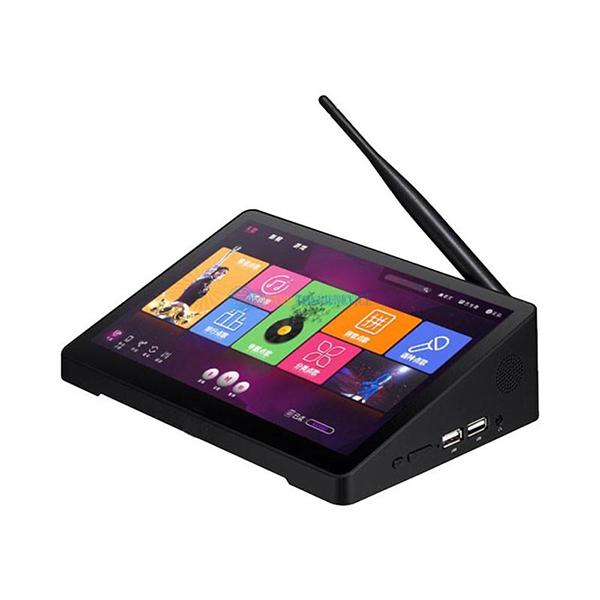Welcome STARK TOUCH DEVICE!
Solutions
Compatibility testing methods for industrial control computer software
Industrial Control Computer Software Compatibility Testing Methodologies
Ensuring software compatibility on industrial control computers (ICCs) is critical for maintaining operational stability. Unlike consumer-grade systems, ICCs often run specialized real-time operating systems (RTOS) or legacy platforms, requiring tailored testing approaches. Below are technical methodologies to validate software compatibility across diverse industrial environments.

1. Hardware-Specific Environment Replication
Industrial software must function reliably on the exact hardware configurations used in production. Testing should mirror physical constraints such as processor architecture, memory capacity, and peripheral interfaces.
Implementation Steps:
Processor Emulation: Use QEMU or similar tools to emulate legacy CPU architectures (e.g., x86, ARM) if physical hardware is unavailable. For example, to test a 32-bit application on a 64-bit host:
bashqemu-system-i386 -enable-kvm -m 512M -hda /path/to/disk_image.img
Verify instruction set compatibility by running diagnostic tools like
objdump -don compiled binaries.Memory Constraints Testing: Restrict available RAM using system parameters. On Linux, modify kernel boot parameters in GRUB:
mem=1024M
Monitor for memory allocation errors or performance degradation during stress tests.
Peripheral Simulation: Use virtual COM ports (e.g.,
socaton Linux) to test serial communication protocols:bashsocat PTY,link=/tmp/virtual_com1 PTY,link=/tmp/virtual_com2
Connect the software to these virtual ports and validate data exchange accuracy.
Validation:
Deploy the software on target hardware and compare performance metrics (e.g., cycle times, latency) against baseline values obtained during development.
2. Real-Time Operating System (RTOS) Integration Checks
RTOS environments impose strict timing and resource constraints. Software must adhere to deterministic behavior and avoid conflicts with kernel-level processes.
Implementation Steps:
Task Scheduling Verification: Use RTOS-specific tools (e.g.,
topvariants or custom kernel loggers) to monitor task execution order and deadlines. For example, in VxWorks, log task states with:ctaskSpawn("testTask", priority, options, stackSize, entryPoint, arg1, arg2, arg3, arg4);Ensure high-priority tasks do not starve lower-priority ones.
Interrupt Handling Analysis: Inject simulated interrupts (e.g., via GPIO pins or software triggers) and measure response times. On Linux-based ICCs, use
irqbalanceto verify interrupt distribution:bashcat /proc/interrupts
Check for uneven load or missed interrupts.
Shared Resource Contention: Test concurrent access to shared memory regions or hardware registers. Use mutexes or semaphores in the software and validate absence of deadlocks with tools like
helgrind(part of Valgrind).
Validation:
Run the software alongside other critical applications (e.g., PLC control loops) and monitor for timing violations or resource exhaustion.
3. Legacy and Modern Protocol Coexistence
Industrial networks often mix legacy protocols (e.g., Modbus RTU) with modern ones (e.g., OPC UA). Software must handle protocol translation without data loss or corruption.
Implementation Steps:
Protocol Bridge Testing: Deploy a virtual protocol gateway (e.g., using
python-opcuaandpymodbuslibraries) to forward data between Modbus and OPC UA. For example:pythonfrom opcua import Clientfrom pymodbus.client import ModbusTcpClient# Connect to OPC UA server and Modbus deviceopc_client = Client("opc.tcp://server:4840")modbus_client = ModbusTcpClient("modbus_device:502")# Forward data between protocolsValidate data integrity by comparing values at both endpoints.
Timing Sensitivity Analysis: Measure protocol handshake durations under load. Use
tcpdumpto capture network traffic:bashtcpdump -i eth0 port 502 or port 4840 -w protocol_traffic.pcap
Analyze packet intervals for consistency.
Error Recovery Testing: Simulate network partitions or protocol misconfigurations (e.g., invalid register addresses in Modbus). Verify that the software retries connections or falls back to safe states without crashing.
Validation:
Log all protocol interactions and review for anomalies, such as duplicate packets or out-of-sequence messages.
4. Environmental Stress Testing
Industrial environments expose ICCs to extreme temperatures, vibrations, and electrical noise. Software must tolerate these conditions without malfunctioning.
Implementation Steps:
Thermal Stress: Use hardware tools (e.g., thermal chambers) to raise ICC temperatures to 70°C (158°F) or higher. Monitor software stability via kernel logs:
bashdmesg -w | grep -i "error\|fail"
Look for thermal throttling events or sensor readout errors.
Electromagnetic Interference (EMI) Simulation: Introduce controlled EMI using signal generators near the ICC. Check for corrupted I/O operations, such as flipped bits in serial communications.
Power Fluctuation Testing: Cycle power to the ICC abruptly (e.g., using a programmable power supply). Verify that the software resumes correctly from unexpected shutdowns by checking filesystem integrity:
bashfsck /dev/sda1
Validation:
After each stress test, run a predefined suite of functional tests (e.g., motor control commands) to confirm expected behavior.
Technical Considerations
Deterministic Logging: Use synchronous logging mechanisms (e.g.,
syslogwith blocking I/O) to avoid losing error data during crashes.Version Locking: Document exact dependencies (e.g., kernel versions, library versions) to prevent breaking changes from updates.
Fallback Mechanisms: Implement hardware watchdog timers to reset the system if software becomes unresponsive.
By systematically addressing hardware constraints, RTOS behavior, protocol coexistence, and environmental factors, industrial control software can achieve robust compatibility across diverse operational scenarios.


